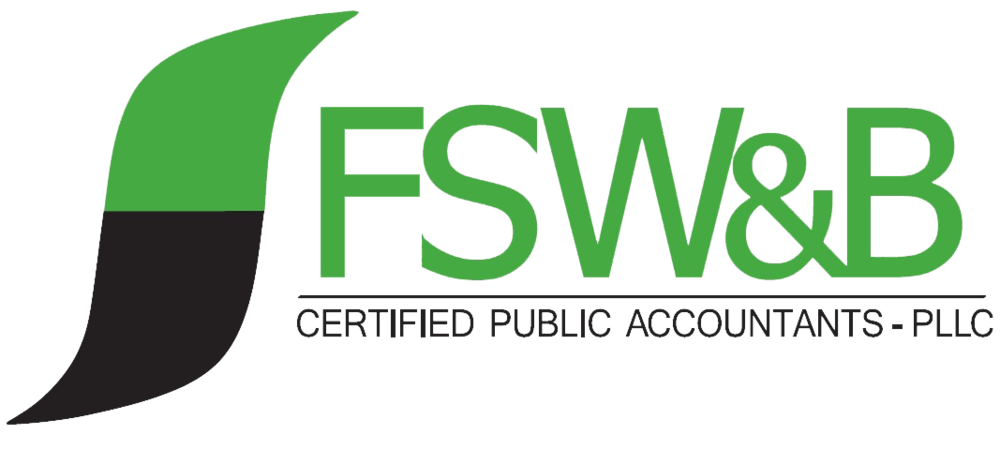Blog 
Welcome
Why States Hoping for Online Holiday Sales to Boost Budgets May Not Get Their Wish
This is the first holiday season since the U.S. Supreme Court allowed states to tax online shopping.
IRS Issues Urgent Warning On Tax Transcript Scam

The Internal Revenue Service (IRS) is warning about a new “tax transcript” scam. In the scam, taxpayers are tricked into opening emails that look like they are from the IRS—but they potentially carry malware. Here’s what you need to know.
In the past few weeks, taxpayers have received emails pretending to be from “IRS Online.” The scam email carries an attachment labeled “Tax Account Transcript” or something similar, and the subject line uses some variation of the phrase “tax transcript.”
Tax transcripts, which are summaries of your tax records and history, are available online, and taxpayers do need access to an email account in order to register with the IRS. However, the IRS reminds taxpayers it does not send unsolicited emails to the public and the agency would not email a sensitive document such as a tax transcript.
If you receive an email like this, do not open the email or the attachment.
If you are using a personal computer, delete the email or forward the scam email to phishing@irs.gov.
If you are using a work computer, notify your company’s technology professionals as soon as possible. If anyone at your workplace opens the malware, it could spread throughout the network and potentially take months to successfully remove.
The malware is known to the IRS. Known as Emotet, the malware generally poses as specific banks and financial institutions to trick people into opening infected documents. According to the IRS, “scores” of Emotet emails were forwarded to phishing@irs.gov recently.
The United States Computer Emergency Readiness Team (US-CERT) issued a warning in July about Emotet versions in Alert (TA18-201A) Emotet Malware. US-CERT has called the Emotet malware “among the most costly and destructive malware affecting state, local, tribal, and territorial (SLTT) governments, and the private and public sectors.” According to US-CERT, Emotet infections have cost SLTT governments up to $1 million per incident to remediate.
The bottom line: use caution. Here’s what to do if you receive a suspicious phone call, letter or email:
- If you receive a call from someone claiming to be from the IRS, and you do not owe tax or if you are immediately aware that it's a scam, don’t engage with the scammer, and do not give out any information. Just hang up.
- If you receive a telephone message from someone claiming to be from the IRS, and you do not owe tax or if you are immediately aware that it’s a scam, don't call them back.
- If you receive an email claiming to be from the IRS or a program affiliated with IRS, don’t respond and don’t click on any links.
- If you receive a suspicious letter or call from someone claiming to be with the IRS, do not give out any information. Call the IRS directly at 1.800.829.1040 to discuss your specific situation.
Don’t fall for the tricks. Keep your personal information safe by remaining alert. When in doubt, assume it’s a scam. For tips on protecting yourself from identity-theft-related tax fraud, click here.
Some taxpayers expected to lose out under new tax law
The Tax Cuts and Jobs Act that Congress passed last December is likely to produce some winners and losers when taxpayers file their returns next tax season.
TaxAudit, a tax audit defense service, came out with a list Wednesday of what it predicts will be the taxpayers who will be hit hardest on their taxes.
Among those who it expects will be paying more this year in taxes are those homeowners who have high loan balances, homeowners with nonqualified home equity debt, itemizers whose combined state and local taxes amount to more than $10,000, and parents whose dependents are 17 years of age and older.
TaxAudit’s list of taxpayers who will suffer the most harm under the new tax law include:
Homeowners
• Taxpayers whose home mortgage loans are above $750,000 and loans were originated after Dec. 15, 2017. These taxpayers are subject to the new $750,000 mortgage loan limit.
• Taxpayers with acquisition debt of more than $1 million from loans originated on or before Dec. 15, 2017. (Previously, interest from an additional $100,000 in acquisition debt was deductible.)
• All taxpayers that have a HELOC (home equity line of credit) that wasn’t used for acquisition, building or improvements on their principal home – interest is no longer deductible.
Itemizers
• Taxpayers who have combined state and local taxes over $10,000.
• Taxpayers who pay foreign property taxes, which is no longer a deduction under the new tax law.
• Employees who are no longer permitted to deduct unreimbursed expenses such as office-in-home, mileage, travel, meals and entertainment.
Self-Employed Taxpayers
• Self-employed taxpayers whose income is above the threshold will be ineligible for the new Section 199A deduction if they belong in a “specified service trade or business” such as accounting.
Parents and Taxpayers with Dependents
• Taxpayers with dependents who are 17 years of age and over will lose the dependent exemption and the Child Tax Credit.
Divorcing Taxpayers
• Taxpayers who pay alimony and were divorced after Dec. 31, 2018. The deduction of alimony is no longer a valid deduction.
• Taxpayers who receive alimony and will have a final divorce decree before Jan. 1, 2019 will need to claim the alimony as ordinary income.
“There still remains an incredible amount of confusion and worry around the new tax law, and many Americans are concerned they will owe the IRS a lot more this year,” said Dave Du Val, chief customer advocacy officer at TaxAudit, in a statement. “We’re hoping to put taxpayers at ease with a few easy tips and advice to minimize their tax bill, so no one has to pay the IRS more than they have to.”
For those taxpayers who are likely to be hit hardest by the Tax Cuts and Jobs Act, the company had a few recommendations:
• Certain factors, such as a home office (not as an employee, though), can help to maximize a home mortgage interest deduction.
• Taxpayers with foreign taxes paid generally would benefit by using Form 1116 if they’re over the $10,000 limit.
• There’s a new $500 credit for eligible taxpayers who support a dependent that doesn’t receive the Child Tax Credit.
Michael Cohn
Tax Issues Facing Small Business In 2018
Small business ownership is a good way to take more control of your time and puts more money in your pocket. But what is the true cost of small business ownership? Surprisingly, many small business owners are faced with many challenges that may leave them with less time and less money than when they were earning a living working for someone else.
One of the most common mistakes that small business owners make is made within the first few weeks of starting up their business. Choosing the wrong entity and/or business structure can severely hurt a small business trying to get on its feet. While each state is different, the common types of business structures are: sole proprietorship, partnership, limited liability company, and corporation (C and S are the most common). It is important to understand who the structuring of your business will affect your tax situation, how you raise money, the paperwork that is needed to be field, as well as your own personal liability requirements.
A sole proprietorship is the easiest to form and gives you complete control over how the business is run. In most cases, you are automatically considered a sole proprietorship is you perform business activities and do not register as any other type of business. Sole proprietorships report their taxes on the owner’s personal Federal Form 1040 tax return. They are also subject to self-employment taxes, and the owner cannot take a W2 wage. As they are not seen as separate from the owner, all assets and liabilities are also not separate from the owner, and you may be held personally liable for any debt and obligation incurred on behalf of the business. Sole proprietorships are considered low risk, and a good place for owners looking to start out before creating any more formalized business.
Partnerships are the simplest structure for two or more owners to do business together. There are two common types of partnerships: limited partnerships and limited liability partnerships. With a limited partnership, there can be only one general partner and the rest are limited liability partners. The limited liability partners also have limited control over the company and its decisions. Profits and losses are passed through to the general partner to report on their personal Federal Form 1040, and any profit is subject to self-employment taxes. The limited liability partners only pay self-employment on any guaranteed payments they receive. In the limited liability partnership, the liability is limited to each owner. This protects all partners from debts against the partnership and the actions of the other partners.
A limited liability company gives the small business owner the benefit of both the corporation and partnership structure. Limited Liability Companies are designed to protect the owner(s) from personal liability, thereby protecting their assets from lawsuits or debt created in the business. The profits and losses are passed through to the owner’s personal Federal Form 1040 for taxation. They are, however, considered to be subject to self-employment taxes. Each state has different rules regarding the treatment of limited liability companies, so it is important to determine I the regulations of your state will work for your business.
A C Corporation is a legal entity completely separated from its owners. As a separated entity, it is responsible for its own taxes as well as legal liability. While this structure provides the most legal protection for the owner, there is also the greatest cost to set up a C Corporation. They also require the most amount of record keeping, operational process and reporting. Additionally, they are subject to double taxation. The profits are first taxed on the corporate level, and then the dividends paid to each owner is taxes on the owner’s personal Federal Form 1040 return. If an owner chooses to leave the Corporation, he/her shares are simply sold, and the Corporation feels little to no affect. Raising funds can also be easier, as the Corporation can sell stock.
Sub Chapter S Corporations are designed to avoid the double taxation that occurs in the more traditional C Corporation. The S Corporation allows for profits and losses to be passed directly to the owner’s or owners’ personal Federal Form 1040 for taxation purposes without being subject to self-employment taxes. Again, each state has different regulations when it comes to the treatment of S Corporations, and so it is important to understand your own states stance. The S Corporation is limited in its shareholders to one hundred, and they must all be US Citizens. It also retains the strict processes and operations reporting that a C Corporation has. And like a C Corporation, it is easy for a shareholder to leave the company.
As business owners begin to navigate their structure, often underpayment or overpayment of taxes become a key issue. Many owners are not aware of what income is reportable, participate in barter systems in their first years but do not report them as income, or engage in cash transactions that are not reported to the IRS. Often owners are unaware of what expenses can be taken against the income, and this can lead to over or under reporting of expenses. In many states there are taxes associated with the location of the consumer, special licenses and other items that the small business owner may not be aware that they must track or have. Small business owners often have difficulty complying with the complex tax code that surrounds business ownership because they simply are not aware of it.
It is important to take advantage of deductions and credits available to your business. It is often hard to keep up with the ever-changing landscape of tax laws and tax reform. Over forty percent of small business owners say they spend eighty or more hours working on tax and accounting related issues a year, and generally all in the last quarter of the year. Often it can seem overwhelming to a small business owner, especially those just starting out. It is important to make sure you start out on the right foot and seek the help of a professional or your state’s business regulatory site to ensure that you are capturing all of the requirements and reporting correctly.
Written by Kazim Qasim | Posted in Small Business Tax Issues

It’s not too late: You can still set up a retirement plan for 2018

If most of your money is tied up in your business, retirement can be a challenge. So if you haven’t already set up a tax-advantaged retirement plan, consider doing so this year. There’s still time to set one up and make contributions that will be deductible on your 2018 tax return!
More benefits
Not only are contributions tax deductible, but retirement plan funds can grow tax-deferred. If you might be subject to the 3.8% net investment income tax (NIIT), setting up and contributing to a retirement plan may be particularly beneficial because retirement plan contributions can reduce your modified adjusted gross income and thus help you reduce or avoid the NIIT.
If you have employees, they generally must be allowed to participate in the plan, provided they meet the qualification requirements. But this can help you attract and retain good employees.
And if you have 100 or fewer employees, you may be eligible for a credit for setting up a plan. The credit is for 50% of start-up costs, up to $500. Remember, credits reduce your tax liability dollar-for-dollar, unlike deductions, which only reduce the amount of income subject to tax.
3 options to consider
Many types of retirement plans are available, but here are three of the most attractive to business owners trying to build up their own retirement savings:
1. Profit-sharing plan. This is a defined contribution plan that allows discretionary employer contributions and flexibility in plan design. You can make deductible 2018 contributions as late as the due date of your 2018 tax return, including extensions — provided your plan exists on Dec. 31, 2018. For 2018, the maximum contribution is $55,000, or $61,000 if you are age 50 or older and your plan includes a 401(k) arrangement.
2. Simplified Employee Pension (SEP). This is also a defined contribution plan, and it provides benefits similar to those of a profit-sharing plan. But you can establish a SEP in 2019 and still make deductible 2018 contributions as late as the due date of your 2018 income tax return, including extensions. In addition, a SEP is easy to administer. For 2018, the maximum SEP contribution is $55,000.
3. Defined benefit plan. This plan sets a future pension benefit and then actuarially calculates the contributions needed to attain that benefit. The maximum annual benefit for 2018 is generally $220,000 or 100% of average earned income for the highest three consecutive years, if less. Because it’s actuarially driven, the contribution needed to attain the projected future annual benefit may exceed the maximum contributions allowed by other plans, depending on your age and the desired benefit.
You can make deductible 2018 defined benefit plan contributions until your tax return due date, including extensions, provided your plan exists on Dec. 31, 2018. Be aware that employer contributions generally are required.
Sound good?
If the benefits of setting up a retirement plan sound good, contact us. We can provide more information and help you choose the best retirement plan for your particular situation.
© 2018
Mutual funds: Handle with care at year end

As we approach the end of 2018, it’s a good idea to review the mutual fund holdings in your taxable accounts and take steps to avoid potential tax traps. Here are some tips. Avoid surprise capital gains Unlike with stocks, you can’t avoid capital gains on mutual funds simply by holding on to the shares. Near the end of the year, funds typically distribute all or most of their net realized capita l gains to investors. If you hold mutual funds in taxable accounts, these gains will be taxable to you regardless of whether you receive them in cash or reinvest them in the fund. For each fund, find out how large these distributions will be and get a breakdown of long-term vs. short-term gains. If the tax impact will be significant, consider strategies to offset the gain. For example, you could sell other investments at a loss. Buyer beware Avoid buying into a mutual fund shortly before it distributes capital gains and dividends for the year. There’s a common misconception that investing in a mutual fund just before the ex-dividend date (the date by which you must own shares to qualify for a distribution) is like getting free money. In reality, the value of your shares is immediately reduced by the amount of the distribution. So you’ll owe taxes on the gain without actually making a profit. Seller beware If you plan to sell mutual fund shares that have appreciated in value, consider waiting until just after year end so you can defer the gain until 2019 — unless you expect to be subject to a higher rate next year. In that scenario, you’d likely be better off recognizing the gain and paying the tax this year. When you do sell shares, keep in mind that, if you bought them over time, each block will have a different holding period and cost basis. To reduce your tax liability, it’s possible to select shares for sale that have higher cost bases and longer holding periods, thereby minimizing your gain (or maximizing your loss) and avoiding higher-taxed short-term gains. Think beyond just taxes Investment decisions shouldn’t be driven by tax considerations alone. For example, you need to keep in mind your overall financial goals and your risk tolerance. But taxes are still an important factor to consider. Contact us to discuss these and other year-end strategies for minimizing the tax impact of your mutual fund holdings. © 2018













